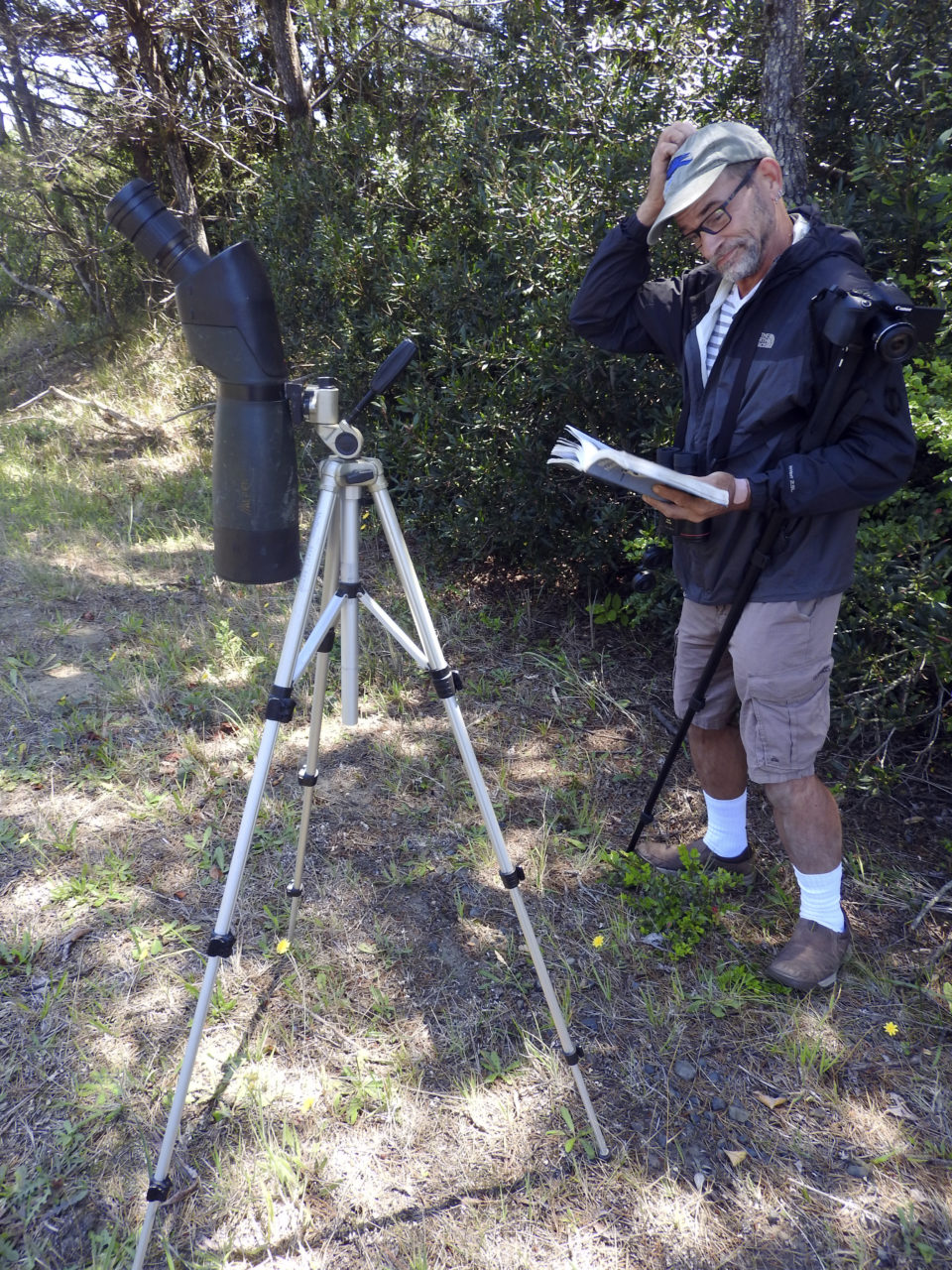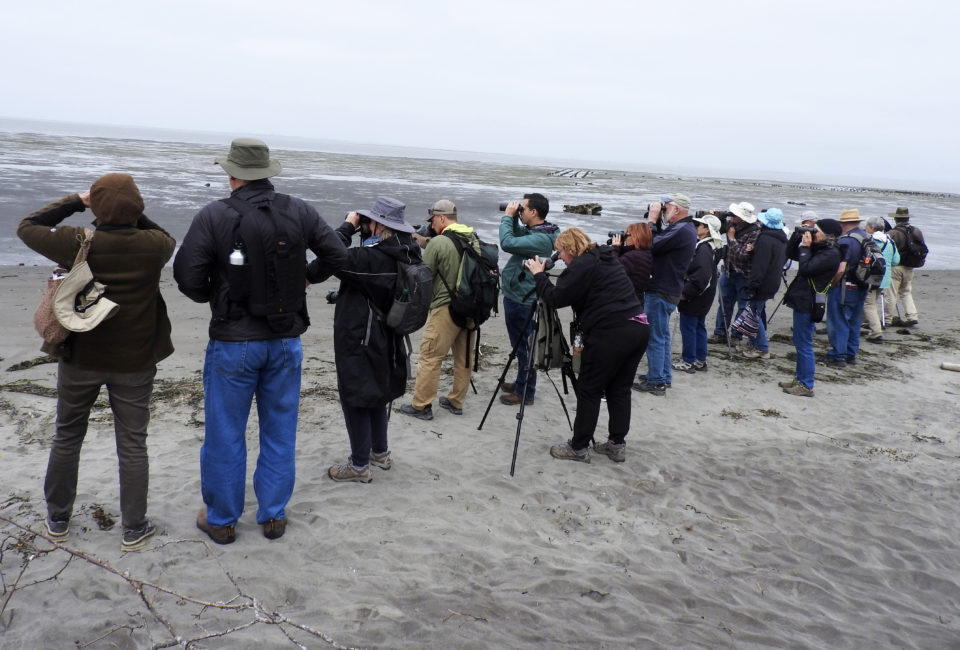According to the U.S. Fish & Wildlife Service, there are about 45 million birdwatchers in America. Extrapolating from our state’s share of the American population, that suggests about 1 million of them are Washingtonians.
You likely know one. You’ve at least seen some at local parks and beaches scanning the shores, trees and skies with ridiculous optical equipment. But how does one readily identify one? Harder still, how does one distinguish between the casual birdwatcher and the rarer breed of True Birders?
Here’s a handy guide to the essential field marks.
The first clues to identification are in the plumage. Birders have historically had mostly gray, or even featherless heads. They are, however, in the midst of an evolutionary sea change. Ever larger numbers of juveniles sporting crests of all colors have been recorded in recent years.
Their bodies tend to be clad in neutral colors, blending in with the environment. Such camouflage makes it easier to sneak up on the birds they hunt. Our Washington coastal subspecies will often have a second, waterproof layer obscuring this (see Fig. 1).
Like parrots and crows, they are known to make use of tools when hunting. Look for a pair of binoculars hung loosely about the neck, and perhaps a spotting scope on a tripod. The latter is commonly used in open areas where the birder’s quarry is far out over the waves or on mudflats. Many Birders, especially juveniles, will also carry a book to help them determine which prey item they are stalking.
It is important to remember that True Birders are highly variable, so the presence or absence of just one of these field marks is not enough to make a positive ID.
More clues can be found by studying their geographic range. The species is generally considered to spring from a small population in Victorian England; but today, like the familiar starlings and city pigeons, they have been introduced worldwide.
In contrast to the global trend of shrinking bird populations, this species — once rare — exploded in the 20th century. Their nests tend to be concentrated in urban areas, but they disperse widely in their hunt for new birds. They have predictable migration paths from their home territories to areas where birds rarely seen in the U.S. are most readily found: southeastern Arizona, south Texas and the islands off Alaska.
While they can be found in low densities in coastal Washington year-round, their migration here tends to peak in the spring and fall, coinciding with the arrival of many shore- and seabirds.

True Birder, Washington coastal subspecies. Adult in fall plumage. Which prominent field marks can you spot?
Definitive indicators of a True Birder can be readily observed if you can find their nests. Aside from the inevitable stash of optical equipment, including various binoculars, cameras, scopes and tripods, there will be the telltale shelf (see Fig. 2). Like an eagle’s nest, it starts out at a manageable size; but the True Birder will add to it year by year, until it becomes a hulking mass that threatens to collapse under its own weight. The shelf pictured here has taken 25 years or so to build, but is by no means complete.

The Birder’s nest: Built of field guides, sound recordings and bird-finding guides from around the world.
Just as a True Birder can identify birds by voice alone, the patient and practiced observer can learn to identify True Birders by their lingo. If you hear Jane say she “dipped on” a bird, it means two things: one, she traveled to a specific place (a “stakeout”) to locate a previously reported rare bird, but didn’t see it; and two, she’s a True Birder. Similarly, she would call that trip a “twitch” or a “chase,” and each new species added to her “life list” is a “tick.”
True Birders even have their own form of written communication: a shorthand code to denote each species they see. Generally, it’s a four- or six-letter combination of the first two letters of the bird’s first and last names. Thus, if a Birder jots down that he saw an “AMRO” in Tokeland, he found an American robin. Sometimes it’s even simpler: for example, “GBH” for great blue heron.
Now you have all the tools you need to confidently identify a True Birder in the field.
A word of caution: If you happen upon a flock in the wild (see Fig. 3), please approach quietly, so as not to flush them or their prey. Just revel in the glorious spectacle of these curiosities of nature.

This flock of True Birders was seen at Bottle Beach during the Grays Harbor Shorebird Festival in May. The field marks indicate most are of the coastal subspecies, with a few migratory Birders mixed in.
About The Author

Jeff Bryant has been an increasingly obsessive birder since childhood. For the past 30 years, what little money he’s been able to set aside has been spent traveling in search of ever more of the world’s 10,000 species. He’s only a quarter of the way there.